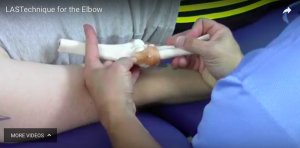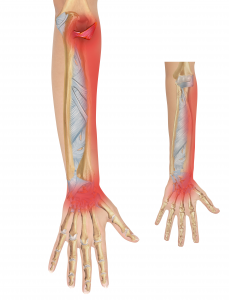Helping Incorporate Research and Manual Techniques into your Massage Therapy Practice!

Here’s another nice piece of research from The Journal of Shoulder and Elbow Surgery detailing the anatomy and kinematics of the Lateral Elbow Complex.
The structure and kinematics of the lateral collateral ligament of the elbow joint were investigated in 10 cadaveric specimens.
The lateral collateral ligament was observed to be a distinct part of the lateral collateral ligament complex. It contains posterior fibers that pass through the annular ligament and insert on the ulna. Three-dimensional kinematic measurements in different forearm rotations showed that joint puncture induced a 1° joint laxity significant in forced varus from 30° to 80° of flexion and in forced external rotation from 30° to 120° of flexion. Division of the posterolateral capsule caused no further laxity.
Cutting the lateral collateral ligament induced a maximum laxity of 11.8° at 110° of flexion in forced varus and a maximum laxity of 20.6° at 110° of flexion in forced external rotation. The corresponding maximal posterior radial head translation was observed at 80° to 100° of flexion and was 5.7 mm in forced varus and 8.1 mm in forced external rotation.
This study suggests the lateral collateral ligament to be an important stabilizer of the humeroulnar joint and the radial head in forced varus and external rotation. The humeroulnar stability is independent of forearm rotation.
Interested in learning more…
To learn more about the functional anatomy of the lateral collateral ligament complex (LCLC) and the surrounding forearm extensors, Go Here.
Sample from the Compilation Course
Leave a Reply